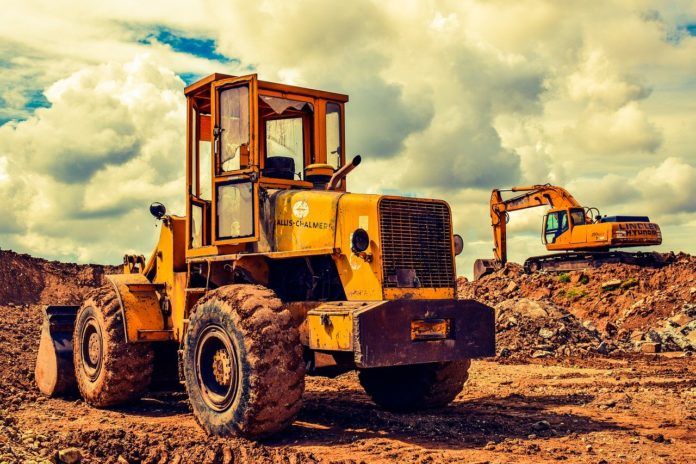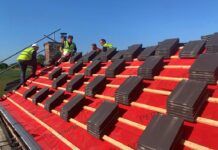Thomas Bradley, a copywriter for Mobile Mini, looks at whether the recent easing of lockdown restrictions and a £1.3 billion investment for the construction of new houses from the government are the first steps in a brighter outlook for the industry.
After a bleak start to the year, combined with the uncertainty of Brexit, the future of the construction industry looks like it’s on the up.
The first indication that things are improving for construction, at least from an economic point of view, is highlighted by the HIS Markit/CIPS Purchasing Managers’ Index (PMI) rating. Used to highlight global economic trends in the manufacturing and service sectors, June’s record jump of 11.4 index points was a five-month high — and a statistic that shows a correlation between lockdowns easing and economies starting to recover.
Although the global index is the UK and beyond, it’s important to dig a little deeper to see what the current state-of-play looks like for the country’s construction industry. The Office for National Statistics (ONS) showed that construction output suffered a 40% collapse in April this year, with the pandemic behind a 41.2% decrease in new work and 38.1% decrease in repair and maintenance.
Representing a financial hole of £5.1 billion, these falls also account for the most significant drops since records began 10 years ago. May’s figures show a small sign of improvement for construction output, with an 8.2% increase — compared to April’s figure — being accredited to the easing of lockdown restrictions.
With the next update from the ONS not due to be published yet, it’s impossible to say right now whether things have continued to improve, but with May’s slight increase and June’s PMI record rating jump, the hope is that the industry continues to head in the right direction.
Nevertheless, even the ONS admits that it’s difficult to quantify the exact impact of the coronavirus alone, with the unpredictability of a virus that could have a second, third or fourth wave.
Government investment
In a bid to plug the financial black hole created by downtime in output, tens of thousands of new homes and other vital infrastructure projects have been given the green light, thanks to a £1.3 billion investment by Housing Secretary Robert Jenrick. The move is part of the government’s plan to deliver upgrades to local infrastructure and boost skills to help trigger a green economy recovery.
This £1.3 billion investment is anticipated to facilitate the construction of up to 45,000 homes, create up to 85,000 jobs and reduce around 65 million kgs of CO2 emissions across England. It’s a perfectly timed boost for an ailing industry desperate for a helping hand to kickstart its recovery.
Safety is paramount
Although it will take a considerable amount of time for construction to reach the level it was before the pandemic, another aspect to consider from the eased restrictions is the return of people to work on construction sites — and the health and safety of working conditions.
Health and safety regulations are always going to be important, but there’s the added caveat of following social distancing and hygiene measures — putting an even greater focus on health and safety in the construction industry.
On one hand, you have the introduction of the Building Safety Bill, which takes forward reforms of the building and fire safety system — for how a building is built and how safe it is once the structure is complete. On the other, the Construction Leadership Council’s Site Operating Procedures during COVID-19 are aimed at protecting workforces from the virus.
The Building Safety Bill was introduced following the Grenfell Tower disaster, and the latter will develop over time, as the guidelines have already had five iterations, with plenty more issues to be produced if the pandemic continues to change at a speed that feels like it’s overnight. Both are positive steps for improving conditions within the industry and pivotal if the world of construction is to move forward positively.
These two pieces of legislation are hoped to work well together. Without the Safety Bill, you run the risk of unsafe buildings built in an unsafe way, and without the guidelines for working during COVID-19, you can’t implement the new ways in which buildings have to be built, all the way from design to completion. And among all of this is the workers and their working environment.
Working on a construction site can be incredibly challenging. It’s less collaborative working spaces and more using the land in which the building is being built on. There’s a huge range of on-site facilities needed during projects, including offices, canteens, drying rooms, toilet blocks, and storage facilities in a variety of sizes and layouts — with these facilities often found inside a storage container.
The nature of work, for example working in close proximities, make social distancing a tough measure to get right with the threat of site closure if guidelines are not implemented correctly. But the good news is that a course for safe working during the pandemic has been launched by industry specialists.
CovCert is an online programme designed to provide employees with an understanding of how to work safely and minimise the risks from COVID-19. The initiative, a collaboration between industry expert Green Hat Consulting and construction workforce specialist Sphere Solutions, will serve to educate and ensure that construction sites continue to be safe and compliant.
Andrew Warring, managing director of Green Hat Consulting, said: “CovCert is aimed at employees who are returning to work on construction sites. The courses are intended to raise COVID-19 awareness and provide employees with the knowledge required to minimise the risk of transmission and infection within the workplace, as well as providing an induction for new employees and informing on up to date guidance.”
Providing workers with confidence on the construction site is of the utmost importance which will no doubt benefit the company they work for and the project they’re helping complete.
There are certainly indications that the construction industry will be back on its feet, although we’re a long way from it being back at the level pre-COVID-19, any progress at all is positive.




